February 27, 2019
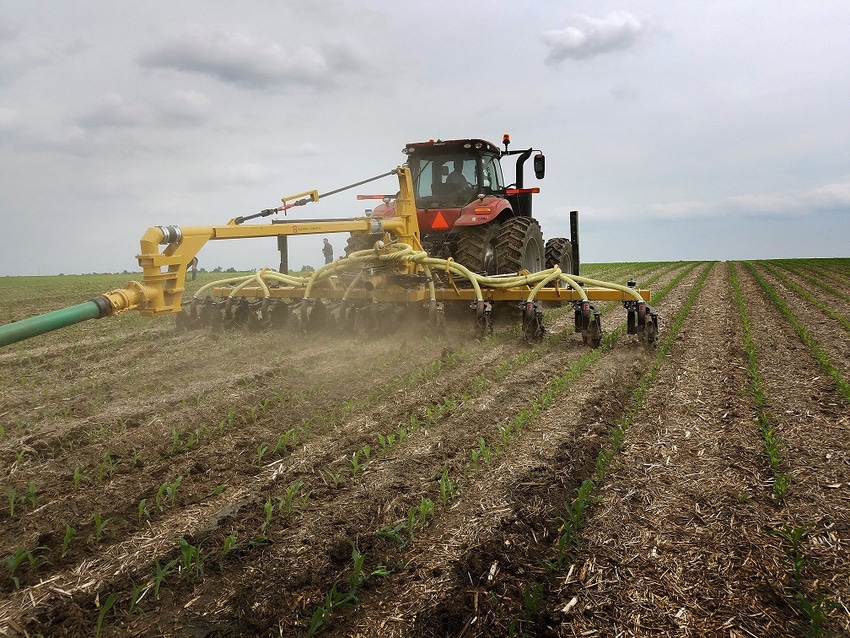
Rob Stout is the national winnner of the the American Soybean Association's Conservation Legacy Award. He was recognized by the American Soybean Association during Commodity Classic in Orlando, Fla.
He is also the Midwest region winner of ASA’s Conservation Legacy Award.
The award recognizes outstanding environmental and conservation achievements of soybean producers.
There’s a little patch of ground as you turn onto a gravel road toward Rob Stout’s homeplace near Washington, Iowa, where wildflowers and forbs attract pollinators and support wildlife. It’s a pretty place, but it covers an even more important element that provides a critical service to the environment.
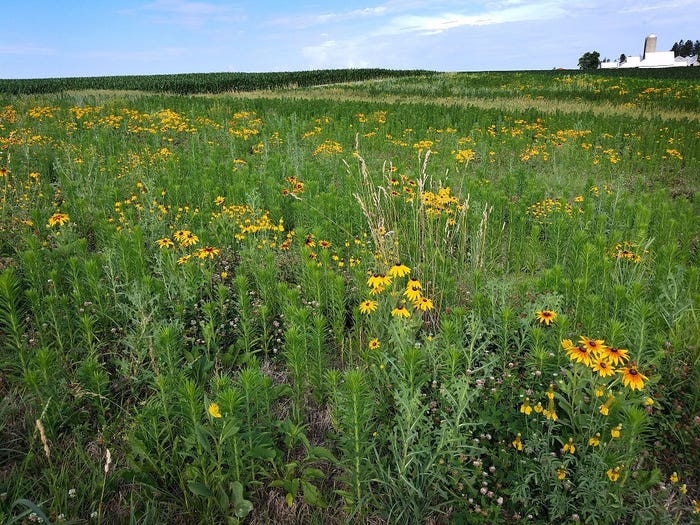
Underneath the prairie patch is a bioreactor, an edge-of-field practice that scrubs nutrients from tile drainage water before it leaves the farm.
 “I installed it in 2014,” Stout says. “We have the fifth year of research results showing an average 70% reduction in nitrate, when you compare water coming in from our tile lines with the water exiting the bioreactor. What leaves our farm goes into Crooked Creek, which ends up in the Mississippi River and in the Gulf of Mexico. So it’s doing a really important job for us.”
“I installed it in 2014,” Stout says. “We have the fifth year of research results showing an average 70% reduction in nitrate, when you compare water coming in from our tile lines with the water exiting the bioreactor. What leaves our farm goes into Crooked Creek, which ends up in the Mississippi River and in the Gulf of Mexico. So it’s doing a really important job for us.”
The bioreactor is just one of the leading-edge practices that Stout has incorporated on this family farm in southeast Iowa. “I think the word is out that I like to be involved with on-farm research projects,” he quips.
And there have been a number of those through the years, as Stout has converted to no-till and incorporated cover crops to protect soil from erosion and build soil health. Improved practices involving nutrient management teamed with the edge-of-field strategy to prevent nutrients from leaving the farm.
Stout’s grandfather bought the 210-acre homeplace in 1926, and it now has grown to 1,100 acres of corn and soybeans, operated by Stout and his wife, Jean. Her son, Alex Zimmerman, joined the operation in 2013 when Rob’s father retired. The farm also grows more than 9,000 pigs a year in a finishing operation, with the manure nutrients used to feed the corn crop.
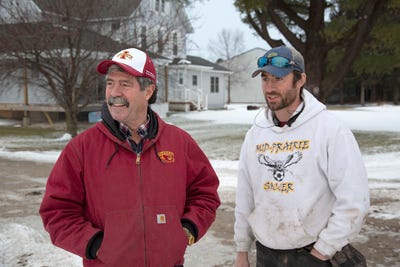
“I’m passionate about conservation,” Stout says. “And with a successor coming along, I want to make sure that I can make these practices work economically so that things are set up to make this operation sustainable well into the future.”
Focused on nutrients
The bioreactor is one of those practices that Stout is evaluating to see where it fits with farms of the future. “As a part of the West Fork Crooked Creek watershed, we received a grant from the Iowa Department of Agriculture and Land Stewardship to improve our watershed by using methods listed in the Iowa Nutrient Reduction Strategy,” Stout says. “I volunteered a farm to see if there was a location suitable for construction of a bioreactor.”
Experts suggested that he locate the structure to treat tile drainage water from a watershed of 50 to 75 acres; his bioreactor site treats 68 acres. Drainage water simply gets diverted through the bioreactor; here, microorganisms living in a bed of wood chips remove the nitrates as the water meanders through the system.
“We picked an area that is pattern tiled so that we weren’t going to add a lot more tile onto the system,” Stout adds. “And we located it in an area so it could be easily accessed and monitored to evaluate its effectiveness.”
A team from the Iowa Soybean Association tests the nitrate levels on both the inlet and outlet sides.
Spoon-feeding the corn crop also helps get the most from nutrients while limiting potential losses. “Our hog operation supplies nutrients for about 60% to 65% of our corn acres,” Stout says. “We supplement with a little extra nitrogen on the planter because, with our cover crop operation, we don’t want to come up short due to nitrogen being tied up after the cover crop gets terminated. We then sidedress as needed.”
Late-spring nitrate testing and fall stalk nitrate testing help Stout zero in on nitrogen rates for the corn crop.
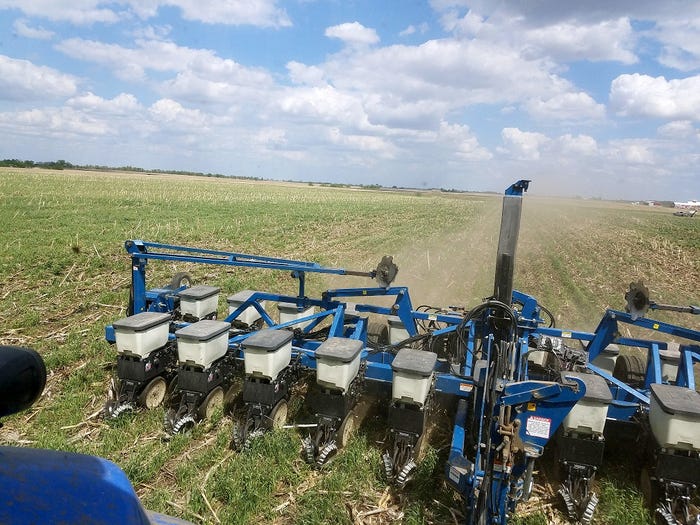
Protecting the soil
Part of the challenge to farming in Washington County is the variation in soils and slopes. “We farm anywhere from what people would call flat, black, heavy soils to lighter timber soils,” Stout points out. “We have fields with zero slope up to 15% slope. In fact, I have a 160-acre field that has all those slopes in it, as well as 14 different soil types.”
All acres, regardless of slope, are no-tilled, and have been since the family made a commitment to continuous no-till in 1983. Cover crops were the next step, beginning in 2009; all acres have received cover crops for the past two years, except for a few acres serving as control checks in a long-term experiment. “Iowa State University, Practical Farmers of Iowa, the Natural Resources Conservation Service, and Iowa Learning Farms are doing experiments to compare several aspects of soil health,” Stout says.
In addition to yield, those measurements include specific looks at such things as earthworm counts, microbial populations, soil organic matter, and soil surface temperature. The cover crop study is on-going, but Stout soon was convinced by what he saw. “After two years of experience, I was sold on it,” he says. “That’s why we’re now using cover crops on all our fields.”
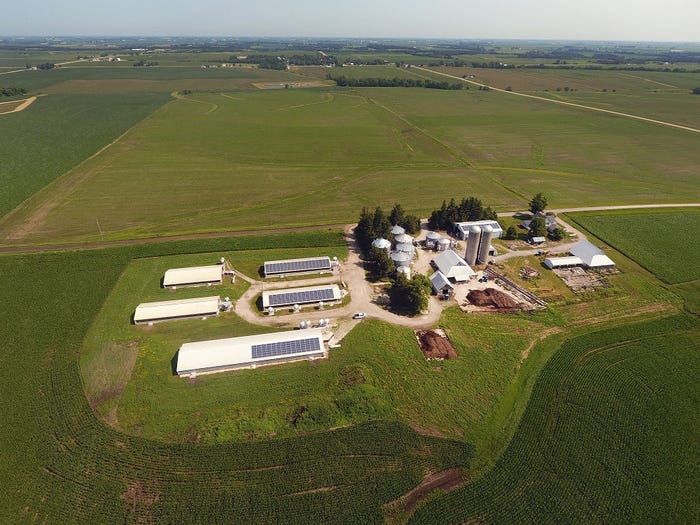
Looking ahead
Pushing for more conservation practices is already in the works on the Stout farm. In addition to terracing and contour farming, some slopes are now being protected with prairie strips — a practice using prairie species planted as in-field contour buffer strips and edge-of-field filter strips — that he noticed in an Iowa State University demonstration.
Stout also has established habitat for pollinators, and is seeing the results. “On a calm day, you go out there and it is just buzzing with bees and butterflies,” he says. “Quail and pheasant populations are on the upswing as well. I feel the efforts we’re doing as far as conservation should be paying off long-term for the environment and for society in general, as well as for my own farm.”
You May Also Like




